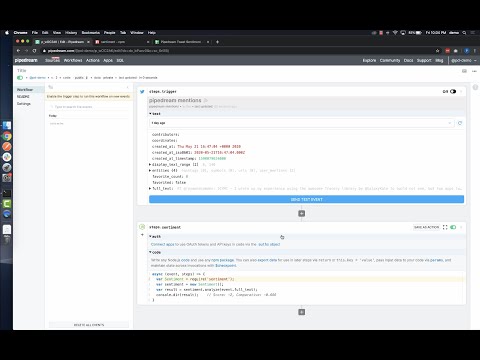What do you want to automate
with Google Sheets and AMQP?
Prompt, edit and deploy AI agents that connect to Google Sheets, AMQP and 3,000+ other apps in seconds.
Trusted by 1,000,000+ developers from startups to Fortune 500 companies
Popular Google Sheets and AMQP Triggers#
Emit new event for each new message in an AMQP 1.0 queue. See the library example here
Emit new event each time a comment is added to a spreadsheet.
Emit new event each time a row or rows are added to the bottom of a spreadsheet.
Emit new event each time a row or rows are added to the bottom of a spreadsheet.
Popular Google Sheets and AMQP Actions#
Add a single row of data to Google Sheets. See the documentation
Add multiple rows of data to a Google Sheet. See the documentation
Send a new message to an AMQP 1.0 queue. See the library example here
Get all values or values from a range of cells using A1 notation. See the documentation
Create conditional formatting with color scales or custom formulas. See the documentation
Overview of Google Sheets#
The Google Sheets API allows for the creation, reading, updating, and deletion of data within Google Sheets, enabling a robust platform for spreadsheet management and data manipulation. Through Pipedream, you can craft serverless workflows that respond to various triggers, such as webhook events, emails, or scheduled times, to interact with Google Sheets. This synergy can automate reporting, synchronize data across applications, manage inventory, track leads in a CRM, or even conduct survey analysis by updating and retrieving sheet data on the fly.
Connect Google Sheets#
import { axios } from "@pipedream/platform"
export default defineComponent({
props: {
google_sheets: {
type: "app",
app: "google_sheets",
}
},
async run({steps, $}) {
return await axios($, {
url: `https://www.googleapis.com/oauth2/v1/userinfo`,
headers: {
Authorization: `Bearer ${this.google_sheets.$auth.oauth_access_token}`,
},
})
},
})
Overview of AMQP#
AMQP (Advanced Message Queuing Protocol) is a flexible protocol designed for high-performance messaging. Integrating the AMQP API within Pipedream workflows allows for robust messaging capabilities between various systems and services. You can use it to queue tasks, run asynchronous job processing, and facilitate communication between different parts of your application or different applications altogether. AMQP's reliability and standardization make it a go-to choice for enterprise-level messaging patterns.
Connect AMQP#
export default defineComponent({
props: {
aqmp: {
type: "app",
app: "amqp",
},
},
async run({ steps, $ }) {
// Access required authentication info via:
// this.aqmp.$auth.host
// this.aqmp.$auth.post
// this.aqmp.$auth.username
// this.aqmp.$auth.password
},
})Related Videos#



Community Posts#


